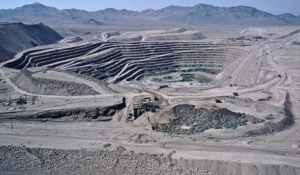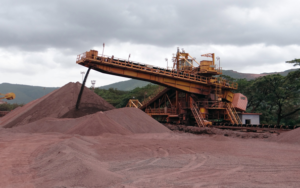
By Peter Yordanov, PR & Content at Pheasant Energy
The quest for mineral resources has been a driving force behind human civilization’s progress. As we delve deeper into the 21st century, the concept of sustainable mining has emerged as a critical aspect, intertwining the need for resource extraction with environmental stewardship and social responsibility. This article delves into the pivotal role of mineral rights within this framework, underscoring their importance in balancing the scales between economic development and sustainable practices.
What Are Mineral Rights?
Mineral rights refer to the entitlement to extract minerals from beneath the surface of a property. These rights, often distinct from land ownership, are governed by a complex legal framework that varies across jurisdictions. They encompass both ownership rights and the permission to conduct mining operations.
Mineral rights can be broadly categorized into two types: surface rights and subsurface rights. Surface rights pertain to the use of the land for non-mining activities, while subsurface rights grant access to the minerals lying beneath.
Surface Rights: These rights involve the use of the land’s surface. The owner may engage in activities like agriculture, construction, or leasing the land for such uses.
Subsurface Rights: These rights are specifically concerned with the minerals below the surface. They allow the holder to explore, extract, and sell these minerals.
The question is who owns the mineral rights to your property?
Why Are Mineral Rights Crucial in Mining?
Mineral rights play a critical role in environmental conservation. By defining who has access to and control over mineral extraction, they can either promote or hinder sustainable practices. Effective mineral rights policies ensure that mining activities comply with environmental standards, thus mitigating the ecological footprint of mining.
The allocation and management of mineral rights are pivotal in driving economic development. They determine the distribution of revenue generated from mineral extraction and influence the attraction of responsible mining companies to a region.
Mineral rights serve as a tool for governments and regulatory bodies to enforce laws and regulations governing mining activities. This enforcement is crucial in ensuring that mining practices align with both environmental and economic objectives.
How Do Mineral Rights Influence Environmental Protection?
The stewardship of mineral rights encompasses sustainable resource extraction practices. It involves the efficient and responsible utilization of mineral resources, ensuring minimal environmental degradation.
A key aspect of mineral rights management is the obligation to rehabilitate and restore land post-mining. This commitment is essential for mitigating long-term environmental impacts and promoting land’s return to a natural or economically usable state.
Successful Practices: Examples include land reclamation projects, water conservation efforts in mining areas, and the introduction of green mining technologies.
The Economic Impact of Mineral Rights
Effective management of mineral rights leads to significant revenue generation, crucial for the economic growth of mining regions. It also ensures that the benefits of mining activities are fairly distributed among all stakeholders, including local communities.
Jurisdictions with well-defined and enforced mineral rights tend to attract responsible mining companies. These companies are often committed to sustainable practices and contribute positively to the local economy.
Case Studies: Examples of regions where effective mineral rights management has led to sustainable economic growth and responsible mining practices.
Mineral Rights and Legal Compliance
Adherence to legal standards in mining is intrinsically linked to the governance of mineral rights. These rights play a crucial role in ensuring that mining operations are conducted ethically and in compliance with local and international laws.
Key Legal Requirements: This includes environmental regulations, labor laws, and compliance with international mining standards.
Challenges in Implementing Sustainable Mining Practices

Despite advancements, significant environmental concerns persist in mining, including land degradation, water pollution, and biodiversity loss. Addressing these challenges is critical for the future of sustainable mining.
Mining can have profound social implications, including displacement of communities, labor issues, and conflicts over resource allocation. Navigating these challenges is essential for the harmonious coexistence of mining activities and local communities.
Common Challenges and Solutions: This section will explore the prevalent issues in sustainable mining and potential strategies to address them.
Addressing Environmental Challenges in Mining
Efforts to mitigate environmental impacts include the adoption of cleaner mining technologies, strict adherence to environmental standards, and ongoing environmental monitoring.
Innovative Techniques: Examples of recent innovations in environmental protection in the mining sector.
Social Challenges and Solutions
Mining should contribute to the social welfare of the communities it affects. This involves fair compensation, community engagement, and investment in local development.
Successful Interventions: Case studies highlighting effective social interventions in mining communities, promoting equity and justice.
Advances in Mining Technology for Sustainability

Technological advancements are revolutionizing the mining industry, particularly in terms of sustainability. These innovations range from advanced exploration methods to more efficient and environmentally friendly extraction techniques.
Cutting-edge Technologies: This includes remote sensing, automation in mining processes, and the use of renewable energy sources in mining operations.
Technology and Mineral Rights Management
Technology plays a crucial role in the effective management of mineral rights. Modern tools and software aid in tracking, regulating, and optimizing the use of mineral resources.
Case Studies: Examples where technology has been instrumental in enhancing the administration of mineral rights, leading to more efficient and sustainable mining practices.
The Future of Sustainable Mining and Mineral Rights
The future of sustainable mining is likely to be shaped by ongoing technological innovation, evolving legal frameworks, and increasing global awareness of environmental issues. This section will explore emerging trends and potential developments in this sector.
Anticipated advancements include stricter environmental regulations, advancements in mining technologies, and greater emphasis on corporate social responsibility in the mining sector.
Emerging Trends in Sustainable Mining
Insights into Future Sustainable Mining Practices
Emerging trends in sustainable mining include the integration of circular economy principles, the use of big data and AI in resource management, and increased stakeholder engagement in mining decisions.
Predicted Advancements: This section will discuss anticipated technological innovations and their potential impacts on sustainable mining practices.
Policy Developments and Mineral Rights
Future policy developments are expected to focus on enhancing the sustainability of mining activities, tightening regulations, and ensuring fair distribution of benefits.
Potential Policy Shifts: A look into possible changes in mineral rights laws and regulations and their impact on sustainable mining.
Conclusion
This article has explored the critical role of mineral rights in the context of sustainable mining. From environmental conservation to economic development and legal compliance, the management of mineral rights is central to the mining industry’s future.
The Importance of Continuing Dialogue and Development
The ongoing dialogue and development in the field of sustainable mining and mineral rights are essential. As the world continues to rely on mineral resources, balancing economic needs with environmental protection and social responsibility will remain a key challenge. The future of mining lies in the ability to innovate, regulate, and collaborate towards a more sustainable and equitable use of our planet’s resources.